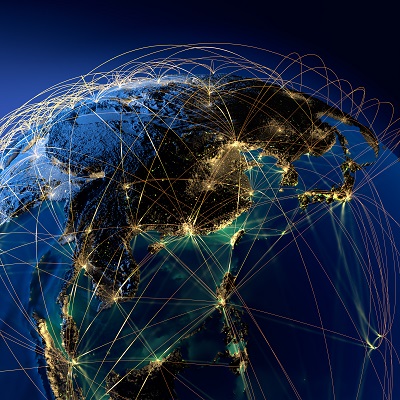A nation must think before it acts.
Humanities and Social Sciences Online
Philip S. Golub’s stated purpose in writing this book is to chronicle “the end of a long sequence of world history in which power and wealth were durably concentrated in the hands of a few Northern societies and states, and the beginning of a new sequence in which the world will revolve around plural if interdependent centers of gravity” (pp. 12-13). Golub begins by reviewing theories of recurrent patterns of hegemonic ascent, supremacy, decline, and succession that reflect the cyclical rhythms of capitalist expansion. Change, we are told, derives from general crises, with one hegemony leading to another and the center of world capitalism shifting as one relatively stable historical configuration tends toward disintegration and another takes its place. In this worldview, China’s reemergence is the latest in the series of restructurings and recenterings since the modern world system emerged in the sixteenth century. Golub is sympathetic to dependency theories, though observing that they suffer from broad-brush treatment because they fail to incorporate historical and institutional factors and do not explain how some parts of the former South were able to break out of the subordinate status in which developed countries had placed them. Such theories, he points out, tend to assume that the state is either in retreat or actually vanishing, being submerged by global mechanisms outside its control. States become the agents of a new transnational order of domination and resistance, as epitomized in Karl Marx’s description of the state as the executive committee of the capitalist class.
This, says the author, has obscured the nexus between capitalist development and the state. Looking back over the evolution of modern capitalism, as opposed to the merchant capitalism of the earlier era, Golub finds that the relative autonomy of capital and the state has varied from moment to moment. At times, the state has relaxed control, allowing capital to roam the world freely, while at others it has reclaimed control. The respective autonomy of state and capital varies in accordance with historical flux and sociopolitical circumstances at both domestic and international levels. The world capitalist economy allows room for associated capitalist development. States can, therefore, create a basis from which to bargain with multinational capitalists. The author explores how successful individuals were able to rise in the first place, and then he shifts the balance, focusing on state- and nation-building in East Asia during various phases of globalization. His analysis first considers the efforts to build modern states in China and Japan during the period of imperial globalization of the nineteenth century, next moving to an examination of the constitution or re-constitution of capitalist and communist authoritarian developmental states in the aftermath of World War II, and finally, China’s turn toward state capitalism in the 1980s.
The chapters of the book follow this sequence. After the introductory chapter, a second chapter addresses the passage from the plural and polycentric early modern world system to the hierarchical late modern Atlantic-centered system. Chapters 3 and 4 examine the internal and external factors in the re-creation of Japan and creation of South Korea, Taiwan, and parts of Southeast Asia, as capitalist developmental states.




